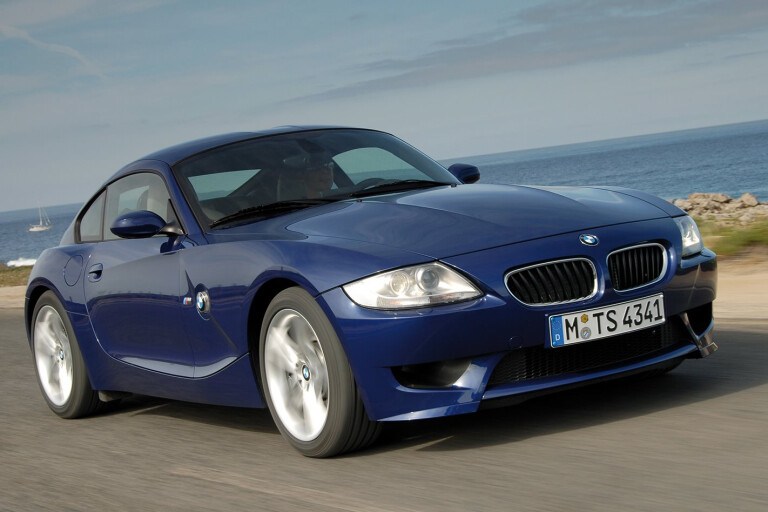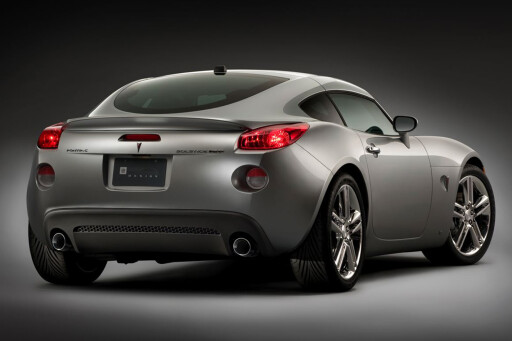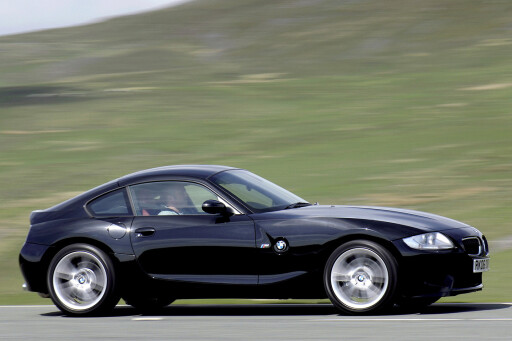
FOR every Porsche 911 there's a whole welter of cars that failed to sidestep the manufacturer's axe. Does that make them bad cars? Not at all. Some of the models you'll see in this list are acclaimed as some of the most iconic vehicles of recent years. There are a few that aren't but they carry their own stories.
Here are the final six of a dozen cars that we reckon died before their time.
Audi RS2 (1994-95)
Porsche’s Zuffenhausen manufacturing plant lies in the northern suburbs of Stuttgart, and its inner sanctum is the Rossle Bau factory. This is the birthplace of the mighty 959, a special skunk works reserved for Porsche's nobility. Yet not all of the cars that have emerged from the gates have borne the Porsche badge. The Mercedes 500E was one and the other was a very special car – the Audi RS2.
 Faster to 30mph than a McLaren F1, the 235kW RS2 was the first of Audi's RS cars. Based on a B4 chassis, Audi delivered quattro all-wheel drive and a bulletproof straight-five motor. To this, Porsche worked its magic on the KKK turbocharger, the tweaked camshafts, the uprated injectors and the juiced-up ECU. You might well spot the 911 alloy wheels, indicators and mirrors and the shamelessly Porsche-logoed ex-968 Club Sport brake calipers. About 2200 RS2s were to be built initially, but due to demand a total run of 2891 were built, of which 182 were right-hand drive. Despite customer demand for a coupe, Porsche refused to build such a car, fearing that it might steal sales from the 911. Unwilling to cede such control to Porsche for future projects, Audi used its Quattro GmbH performance arm to develop future RS products in-house at Neckarsulm.
Faster to 30mph than a McLaren F1, the 235kW RS2 was the first of Audi's RS cars. Based on a B4 chassis, Audi delivered quattro all-wheel drive and a bulletproof straight-five motor. To this, Porsche worked its magic on the KKK turbocharger, the tweaked camshafts, the uprated injectors and the juiced-up ECU. You might well spot the 911 alloy wheels, indicators and mirrors and the shamelessly Porsche-logoed ex-968 Club Sport brake calipers. About 2200 RS2s were to be built initially, but due to demand a total run of 2891 were built, of which 182 were right-hand drive. Despite customer demand for a coupe, Porsche refused to build such a car, fearing that it might steal sales from the 911. Unwilling to cede such control to Porsche for future projects, Audi used its Quattro GmbH performance arm to develop future RS products in-house at Neckarsulm.
Porsche 968 Turbo (1993-94)
The reason for the axing of the Porsche 968 is glaringly obvious. It was replaced as Porsche's entry-level sports car by the Boxster in 1996. Yet as much as we tend to view the lovely Club Sport as the alpha and omega of all things 968, a little forced induction proves otherwise. The 968 Turbo S was never officially sold in Britain but you'd gladly sit on the wrong side to pedal a car with the cylinder head from a 944 Turbo S and a 3.0-litre 944 S2 engine block. It demolished the 0-60mph sprint in 4.7 seconds and made 153kW. Sadly, only 16 were produced.
.jpg ) So was that the ultimate four-cylinder Porsche? Almost, but not quite. Eclipsing it in terms of power and rarity value is the 968 Turbo RS. Available in either 250kW or 260kW trim, the production run of this car ran to a grand total of four. There was a red one, a black one, a white one and a yellow one. The red one sold at auction in 2012 for $346,000. Given that this powerhouse was replaced in 2006 by the 200kW Boxster, it's quite reasonable to lament the fact that the 968 was cut down in its prime.
So was that the ultimate four-cylinder Porsche? Almost, but not quite. Eclipsing it in terms of power and rarity value is the 968 Turbo RS. Available in either 250kW or 260kW trim, the production run of this car ran to a grand total of four. There was a red one, a black one, a white one and a yellow one. The red one sold at auction in 2012 for $346,000. Given that this powerhouse was replaced in 2006 by the 200kW Boxster, it's quite reasonable to lament the fact that the 968 was cut down in its prime.
Pontiac Solstice Coupe (2009-10)
The Pontiac Solstice Coupe probably doesn't register large on the radars of Aussie car enthusiasts but it's a salutary tale that demonstrates that even well-received cars can disappear down the gurgler with nary a trace if the brand's not doing the business. The Solstice was originally launched in late 2005, and the open-topped car was loved by the media and public alike. The first year's planned production run of 7000 cars quickly expanded to 10,000 units. But as the 2008 global financial crisis bit hard and discretionary purchases such as cars were amongst the first budget items to be chopped, the US government cut its handouts to General Motors. Despite Pontiac being GM’s third-largest selling brand with 278,000 sales in 2008, enjoying the youngest average age of any GM brand and bringing the lovely Solstice Coupe to market in 2009, the company whose tagline was “We Build Excitement” shut the doors on its Wilmington, Delaware plant, the sun finally setting on the Solstice – and the Holden export program that was sending rebadged Commodores Stateside.
 It's worth remembering what a good car this was, though. Built on the same platform as the Opel GT, it was light, responsive and, in GXP form, powerful, with a 194kW turbocharged 2.0-litre engine that would get it to 100km/h in 5.4 seconds. Despite this, just 1266 Solstice Coupes made it down the Wilmington line. Here was a modern, lightweight, responsive American sports car and it lasted just 12 months. Sometimes there genuinely is no justice.
It's worth remembering what a good car this was, though. Built on the same platform as the Opel GT, it was light, responsive and, in GXP form, powerful, with a 194kW turbocharged 2.0-litre engine that would get it to 100km/h in 5.4 seconds. Despite this, just 1266 Solstice Coupes made it down the Wilmington line. Here was a modern, lightweight, responsive American sports car and it lasted just 12 months. Sometimes there genuinely is no justice.
BMW Z4 M Coupe (2006-08)
You know the BMW Z3 M Coupe right? You know, the bread van, the clown shoe, the weird-looking thing hatched in a basement? Well this isn't it. This is its successor, the Z4 M Coupe. It didn't get any nicknames because it never really generated much traction with the public. The Z4 M Coupe should have been off to a flier. It was introduced to the public in a gap between the end of the E46 M3 and the introduction of the E92 M3 so it was, for a short while at least, the most focused sports car in BMW's line up. Despite all this, it always felt like a car that could never live up to its predecessor.
 There was never anything wrong with the power or performance, with 250kW on tap and a whole host of trick bits purloined from the legendary M3 CSL. The handling was always something you needed to watch out for, though. It was peachy up to a certain level, but really push the Z4 M and at the limit it was snappy and unforgiving. One well-renowned performance driving tutor described it as “a bit of a pig”. So there we have it. BMW replaced the breadvan with the pig. Harsh? Maybe, but when the E85 generation of the Z4 died in 2008 it took with it a car that had the capacity to put the frighteners on some of the best.
There was never anything wrong with the power or performance, with 250kW on tap and a whole host of trick bits purloined from the legendary M3 CSL. The handling was always something you needed to watch out for, though. It was peachy up to a certain level, but really push the Z4 M and at the limit it was snappy and unforgiving. One well-renowned performance driving tutor described it as “a bit of a pig”. So there we have it. BMW replaced the breadvan with the pig. Harsh? Maybe, but when the E85 generation of the Z4 died in 2008 it took with it a car that had the capacity to put the frighteners on some of the best.
Holden Commodore VFII (2015-17)
Yep, the good ol’ Commo, a car that really got into its stride in VFII guise is one that’s facing the chop way too early. How many other cars can you think of that still register in the top 10 best sellers and then get the chop. Of all the cars here, the Commodore is the one that leaves the biggest hole, will cause grown men to cry into their beer and which will represent the biggest change in culture. Sceptics will say that bankrolling the VE did little for Holden’s chances and that our market is too small for a car such as this, despite a recent export rally to the US.
 The Falcon was an old product that looked and felt it. The Commodore VFII? That was Australia just getting into gear and showing the world it was capable of building a sports sedan like no other, especially in punchy HSV guise. It’ll be missed.
The Falcon was an old product that looked and felt it. The Commodore VFII? That was Australia just getting into gear and showing the world it was capable of building a sports sedan like no other, especially in punchy HSV guise. It’ll be missed.
Delorean DMC-12 (1981-82)
We end with a car that was never any good. The Delorean DMC-12 was, is and will always be an awful car to drive. It was a lash-up from the start. Originally designed to house a lightweight mid-mounted rotary engine, the DMC-12 was produced with a rear-mounted anvil of a Renault V6 that managed an asthmatic 112kW. John Delorean had gathered investment based on the assembly facility being located in Puerto Rico but switched to Northern Ireland, while Colin Chapman set about redesigning his car to something remotely capable of making production.
 Quality issues and John Delorean's arrest and subsequent acquittal on drug trafficking charges led to the business, which the Northern Ireland Development Agency had assessed as having a 10 percent chance of success, eventually imploding. Old stock was sold off by a number of hastily formed companies but production of new body parts was hampered by the fact that the body stamping dies were used as anchors for nets at a fish farm in Ards Bay, Connemara. Drive one today and you'll find a car that's overweight, underpowered and possessed of a chassis with all the torsional rigidity of a peshwari naan. Even in 1981 Delorean recognised this and promised turbocharged power and chassis upgrades. Promises were never enough, though. If only he could find some way to travel back in time to get the project right from the get go...
Quality issues and John Delorean's arrest and subsequent acquittal on drug trafficking charges led to the business, which the Northern Ireland Development Agency had assessed as having a 10 percent chance of success, eventually imploding. Old stock was sold off by a number of hastily formed companies but production of new body parts was hampered by the fact that the body stamping dies were used as anchors for nets at a fish farm in Ards Bay, Connemara. Drive one today and you'll find a car that's overweight, underpowered and possessed of a chassis with all the torsional rigidity of a peshwari naan. Even in 1981 Delorean recognised this and promised turbocharged power and chassis upgrades. Promises were never enough, though. If only he could find some way to travel back in time to get the project right from the get go...
Any cars we’ve overlooked? Let us know!



COMMENTS